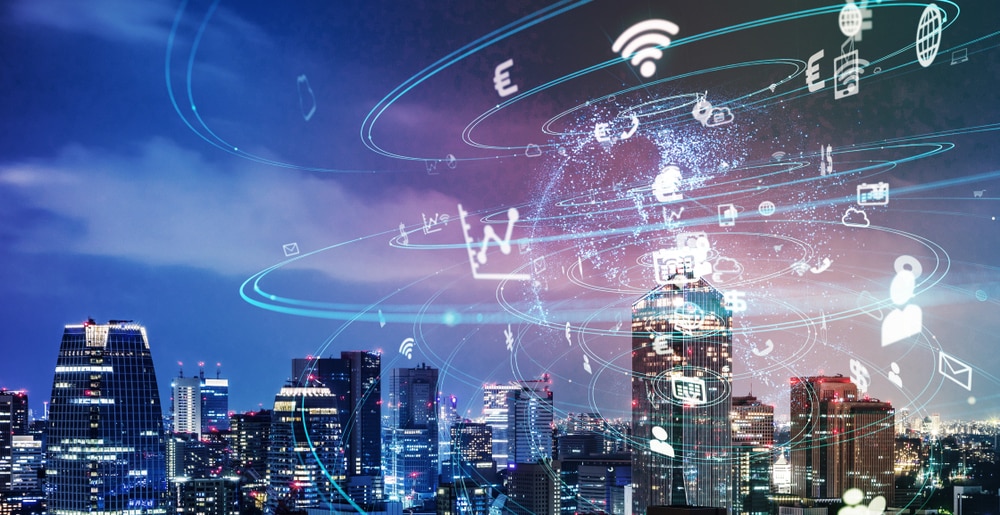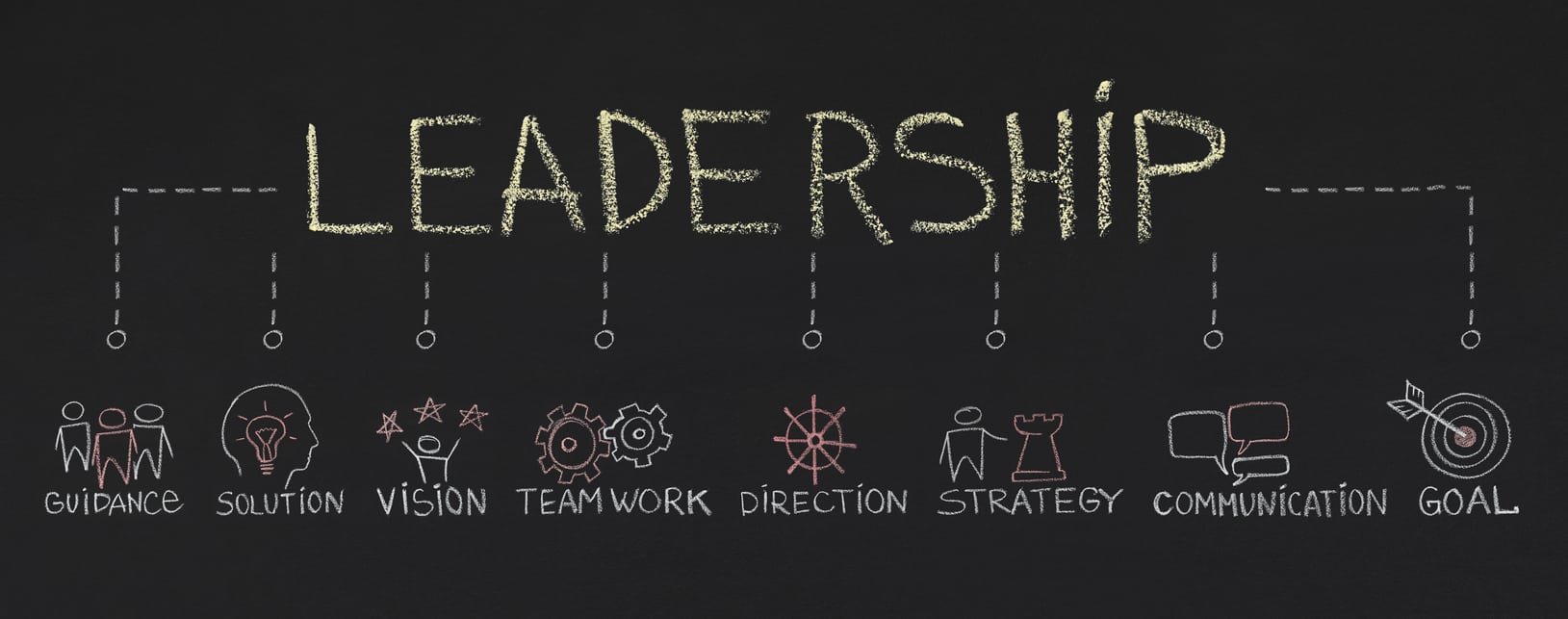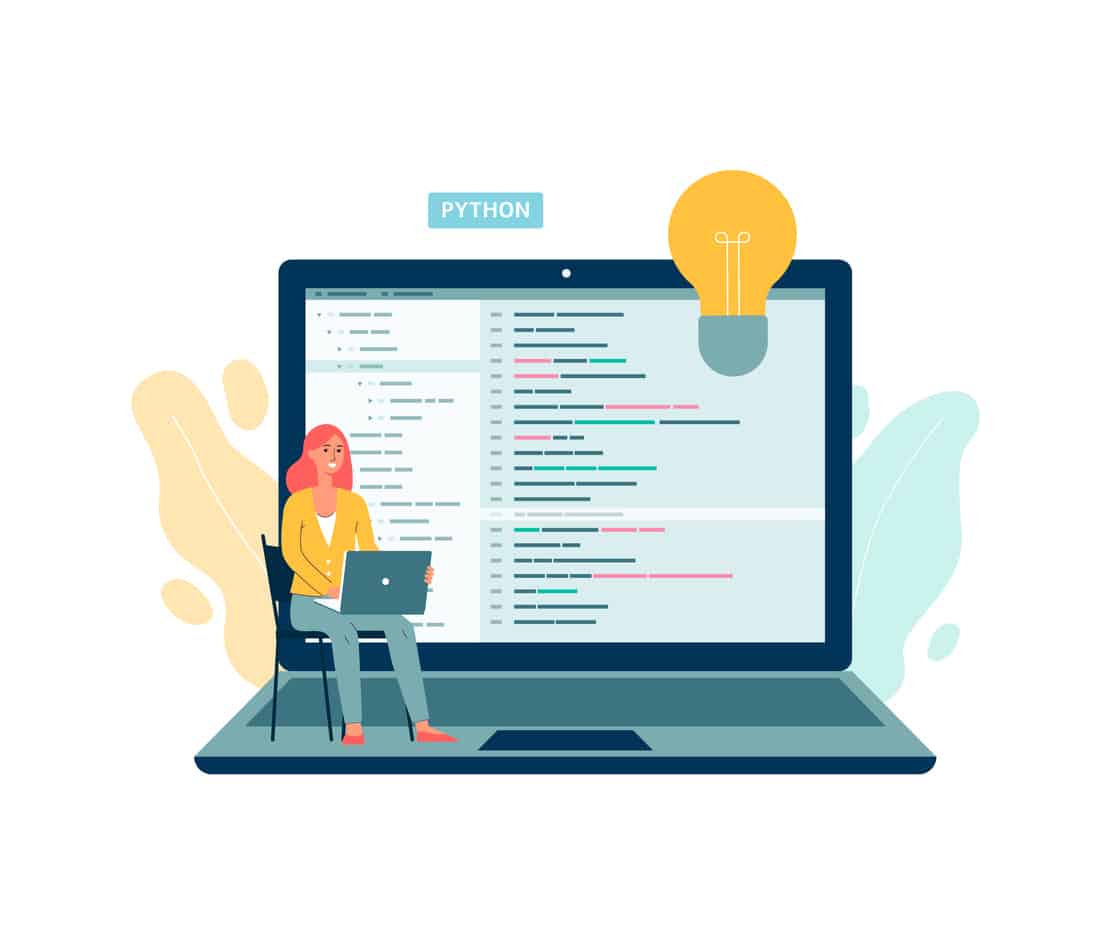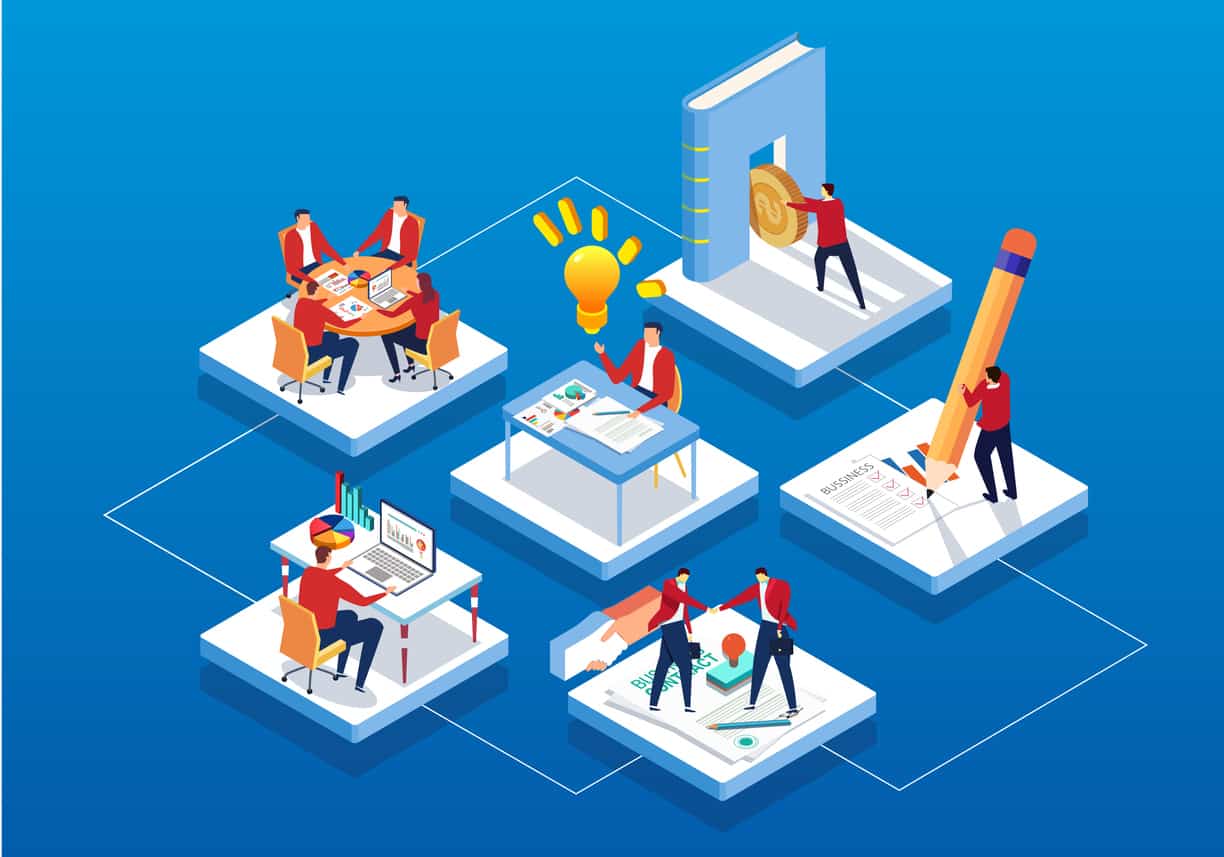What is the Internet of Things?
The Internet of Things, or IoT, refers to the network of devices around the world that are connecting and exchanging data or information with each other over the internet. These devices range from everyday technology gadgets such as smartphones, headphones, wearable devices, etc., to household objects such as smart lights, washing machines, smart thermostats, coffee makers and sophisticated industrial tools, machine components, cars, aeroplanes, and anything you can think of. You can think of IoT as a giant system of connected things seamlessly merging digital and physical worlds by connecting and sharing data. According to the experts, there are more than 10 billion active IoT devices right now, and this number is projected to grow and surpass 25.4 billion by 2025.
Why is IoT important?
Over the last decade, IoT has become one of the most important technologies in our everyday lives. IoT has enhanced the lives of people in this hyperconnected world by enabling them to gain control over smart devices and interact with them to get things done faster. For instance, you can set up devices such as a coffee maker to start brewing coffee for you when you wake up. Another example is your car GPS helping you out to find the fastest route in case of heavy traffic. Smart home security systems can monitor what is going on inside or outside your homes, see and talk to visitors and share all this information with you even when you are out. It is easy to set these smart devices, give them instructions or allow them to access data to act on information and make your life easier.
Looking beyond the household devices, IoT can be applied on a broader scale to transportation networks such as self-driving cars and smart cities, which can improve how we manage our public spaces.
“If you think that the internet has changed your life, think again. The Internet of Things is about to change it all over again!” — Brendan O’Brien
IoT is essential to businesses and industries as well. It enables organizations to automate processes, get real-time insights into system performance, manage logistics, improve business strategies and reduce labor costs. In terms of industrial settings, IoT can achieve wirelessly automated control of machines or sensor devices that use cloud technologies. This can be beneficial in establishing smart manufacturing and digital supply chains using machine-to-machine (M2M) communication.
What are the key application areas for the Internet of Things right now?
The IoT market is constantly evolving and growing while touching all aspects of our lives. In 2020, IoT spanned across various markets, with Manufacturing/Industrial settings being the most common, followed by transportation and energy IoT. Let us discuss in detail about top application areas of IoT one by one –
Manufacturing/Industrial IoT
Manufacturing/Industrial IoT tops the list of key IoT application areas and is set to gain a competitive advantage in manufacturing and innovation by automating their work routines.
“Industrial IoT is transforming the rules of manufacturing, fueling cloud and edge innovation, accelerating the evolution of digital factories, and enhancing operational performance.”
– Satya Nadella, CEO of Microsoft
“The IoT is removing mundane repetitive tasks or creating things that just weren’t possible before, enabling more people to do more rewarding tasks and leaving the machines to do the repetitive jobs.”
– Grant Notman, Head of Sales and Marketing, Wood & Douglas
The automation requirement for industries is growing at a very fast rate, and IoT is catering to various verticals both inside and outside the industries to mainly collect and analyze data, automate working routines of various devices and systems. The IoT technologies inside the factory are set to help industries in asset performance management, remote control of various devices, equipment monitoring, management of entirely remote operations, monitoring of production floor, automated quality control, on-demand service, intelligent manufacturing, to name a few. Industrial IoT solutions have been actively enhancing the aspects of digital industrial transformation by reducing operational costs and getting better uptime. Going forward, the industrial IoT or IIoT market is touted to grow from USD 77.3 billion in 2020 to 110.6 billion in 2025 in various IIoT verticals such as manufacturing, transportation, agriculture, energy production, oil and gas, healthcare, and more. (Source)
IIoT enabled Manufacturing projects examples –
1. Amazon warehouse
The retail giant Amazon has been regarded as the perfect innovator for utilizing IIoT in warehousing and logistics. The company’s fulfillment warehouses use Wi-Fi-connected Kiva robots. Amazon acquired Kiva technology in 2012 for $775 million, which enables robots to locate products in the warehouse and bring them to workers, saving the time of employees to go and manually hunt the shelves. These Kiva robots helped reduce the operating costs by 20% in 2014, according to Dave Clark, senior vice president at Amazon.
2. Airbus – Factory of the Future
Airbus has launched an initiative named Factory of the Future to boost production capacity and streamline operations. This digital manufacturing initiative is specifically designed to reduce errors while manufacturing and reduce the cost of mistakes made during that process. The company workers are given wearable technology, and their tools have integrated sensors to help enhance safety at the workplace and reduce manufacturing errors. For instance, during the process of cabin-seat making, wearable technology helped improve 500% of productivity while eliminating nearly all errors.
3. Boeing – Increased manufacturing efficiency
The aviation pioneer Boeing and its subsidiary Tapestry Solutions have been using IoT technology to drive manufacturing efficiency through their industries and supply chains. The company is also making notable strides in digitally transforming its business and increasing the number of connected sensors in its planes.
Transportation/Mobility
Transportation is the second largest area that benefits from IoT applications. Typical applications of IoT-enabled technologies include vehicle-to-vehicle (V2V) communication, vehicle diagnostics, telematics, tire pressure monitoring, vehicle tracking, and more.
“Connected solutions bring increased vehicle and construction equipment uptime for our customers, better safety for drivers, operators, and other road users – and of course – fewer emissions of carbon dioxide. The first million connected assets at Volvo is only the start, we are committed to remain a leader in this field.”
– Martin Lundstedt, CEO of the Volvo Group
Autonomous cars are the future of the global automobile market. Tesla set the benchmark in 2012 with the launch of the Model S equipped with over-the-air upgrades having onboard Wi-Fi and embedded data connections. Since then, Mercedes-Benz, Chrysler, and almost every major auto-maker have followed suit by tapping into IoT technologies. Apart from these, the freight trucks, a fleet of cars, ships, trains, or any vehicle carrying inventories are embedded with IoT sensors which enables the companies to track and trace, reroute based on weather conditions or driver unavailability, monitor or control temperature of temperature-sensitive inventory, send alerts when the temperature falls to a certain level, etc.
Accessibility to voice commands enables a person to play their favorite music or make calls by just using their voice. The smartphone-enabled dashboard assures the safety of the car, and automotive telematics enables car owners to keep an eye over their car from a remote location.
IoT enabled projects in Transportation/Mobility examples –
1.Self-driving car permit
California’s Department of Motor Vehicles (DMV) has recently been awarded Nuro, the state’s first commercial permit for self-driving cars that allows them to operate their autonomous vehicles commercially on the roads. (Source)
2. Biz4Intellia – Remote Surveillance and asset management
Biz4Intellia is an end-to-end IoT software provider which can be used to monitor your assets remotely. It can gather your fleet’s real-time information such as latitude and longitude of the assets, loading weight on freight trucks, etc., and carry out other useful analyses based on those insights. The advanced features can provide information about geofencing, propensity, and more.
3. Caledonion Logistics – Driver behavior tracking
Caledonion Logistics uses MyGeotab for tracking driver behaviour and monitors the fleet remotely with real-time tracking. In case of any abnormal activity, it issues an alert making the drivers accountable for their actions.
Energy
“Through IoT we’re looking to significantly enhance the productivity and scope of our advanced analytics capabilities to create greater economic value across Shell’s operations. IoT allows us to optimize our existing investments in data and cloud infrastructure while accelerating time to value of AI-based applications, so we can better serve our customers with even more agility and efficiency.”
– Jay Crotts, CIO Shell Group
Global energy consumption is increasing day by day, and a 2017 report suggests that it is expected to grow by 40% over the next 25 years.
This calls for smarter solutions to save energy and take steps towards environmental sustainability. As per the saying, “Energy saved is energy generated,” we cannot rely forever on non-renewable sources of energy and have to move on to cleaner alternatives.
An efficient way to save energy is to reduce wastage. IoT has revolutionized the energy industry by changing how companies and customers interact. From energy generation to transmission and distribution, IoT has streamlined the entire process and made it possible to remotely monitor and manage assets, optimize grids, monitor resource wastage, undergo predictive maintenance, and bring more transparency for customers. The IoT-enabled technologies are set to power the future of the energy industry and help reduce wastage by automating the usage of energy to create more energy-efficient spaces.
“IoT exists, there’s nothing futuristic about it. Already today advanced sensors make it possible to monitor and communicate grid data. The information gathered by the sensors is transmitted to gateways and elaborated by data centers using machine learning algorithms with increasingly sophisticated models of data reading. This process brings enormous benefits in terms of grid efficiency.”
- Fabio Veronese, Head of Infrastructure & Networks Digital Hub at Enel
IoT enabled projects in Energy industry examples –
1. Brooklyn Microgrid – TransActive Grid
In New York, Brooklyn Microgrid developer LO3 Energy has partnered with blockchain technology developer ConsenSys to create a connected network of energy called TransActive Grid. The grid has a layer of smart meters, and blockchain technology enables the first peer-to-peer energy exchange. The smart meters track the electricity generated in homes and help manage energy transactions.
2. Hive
Hive is a smart home meter made by British Gas, and it has already been upgraded to Hive 2. This smart meter gives users the option to control water heating from a remote app via their smartphones.
3. Exelon – wind forecast model
Exelon uses GE’s Predix Platform to optimize wind forecast accuracy. This wind power forecast model is developed by analyzing the insights provided by Exelon’s data. By taking into account seasonal effects and running other data analytics in Predix Cloud, weather forecasts can be achieved within seconds with much higher accuracy.
Retail
The IoT retail market was growing at an unprecedented rate and was estimated at $16.36 billion in 2016 and is expected to reach $94 billion by 2025.
“When we talk about the Internet of Things, it’s not just putting RFID tags on some dumb thing, so we smart people know where that dumb thing is. It’s about embedding intelligence, so things become smarter and do more than they were proposed to do.”
— Nicholas Negroponte
The substantial increase in E-commerce platforms and urbanization has encouraged traditional retailers to leverage IoT technologies and enable machine-to-machine (M2M) communication for seamless customer experience. IoT applications have proliferated the retail industry and are utilizing customer data obtained from smart technologies such as wearables, beacons, Bluetooth Low Energy, etc., to determine customer profiles. Retail companies can use IoT applications to manage inventories, optimize the supply chain, reduce operational costs and improve customer experience.
Customers can enjoy a smart shopping experience using apps and virtual retail stores that links physical and digital worlds into one. Other examples of IoT solutions include customer tracking, inventory management, digital signage, personalized marketing with targeted offers, cashier-less payment systems, IoT-enabled warehouse robots, real-time monitoring of goods, and more.
IoT enabled projects in retail industry examples –
1. SmartShelf
AWM’s Smartshelf, located in California, is fitted with optical sensors to display information about the product, its pricing, inventory levels, etc. The weight-sensors collect RFID-based information and recognize customers’ age, gender, etc., while beacons can push targeted offers.
2. MagicBand
Disney World will be using IoT-enabled MagicBand that allows site managers to find out where queues are forming, how long a user has been waiting, etc., and then manage the in-store wait times proactively.
3. ParceLive
ParceLive is an IoT-enabled delivery service that allows customers to track their parcels in real-time. The customers will be alerted as soon as their parcel has been delivered or dropped. The tracking is done using a built-in GPS tracker for deliveries and then updates are created regarding the delivery status.
Healthcare
IoT offers multiple benefits to the healthcare industry. In the light of the recent pandemic, IoT-based healthcare solutions are surging. The demand for remote monitoring, digital diagnostics, virtual visits, automated patient care, robot assistance, and tracking hospital staff and patients is increasing.
“The pandemic has told us how much patients benefit from technology and apps. It is a kind of turbo-boost to advance our efforts around digitization. My main learnings from the coronavirus crisis so far have been of a technical nature: we need more open and transparent communication to address structures and processes that are no longer working.”
– Dr. Peter Gocke, Chief Digital Officer Charite Universitätsmedizin Berlin
With human contact becoming a source of Covid-19 spreader, healthcare industries, governments, and patients have been turning to technological solutions to keep them connected to healthcare provisions and new developments. IoT has enabled doctors and healthcare workers to –
- automate patient care
- real-time monitoring of patient’s conditions
- take prompt action during emergencies
- provide remote medical assistance
- continuous tracking of patient’s parameters
- quickly analyze and disseminate data
- reduce inefficiency and errors
- maintain quality control
- reduce healthcare costs by streamlining the process
- track drug effectiveness
Some examples of IoT-enabled medical devices include –
- sleep monitor
- vital signs data capturing
- remote care biometric scanners
- air quality sensors
- remote temperature monitoring of vaccines
- smart medical wearables such as pulse oximeters
- wireless biosensors
- automated insulin-delivery (AID) systems
- wearable pendants to assist the elderly
IoT enabled projects in healthcare industry examples –
1. Virtual Clinic
The United Arab Emirates’ Ministry of Health and Prevention has set up virtual clinics that use digital communication systems and smart technology to offer remote health services. The virtual clinic has reportedly taken care of more than 15,000 patients by May and utilized smart solutions to fight the Covid-19 pandemic.
2. Pacemakers
Medtronic offers advanced pacemakers, small devices that can be implanted in the chest to treat patients having an irregular heartbeat or other related deformities. This device collects all the data related to the patient’s physical activity, battery information, and tracking of vitals while restoring the heart rate to normal by stimulating the heart muscles with electrical impulses.
3. QuiO
QuiO is a cloud-based IoT platform that helps patients with chronic conditions by wirelessly connecting various devices related to their health and medications. This allows doctors or caregivers to respond to data in a timely manner effectively. The patients can also get personalized tips to better deal with their condition.
4. Parkinson’s House
Pfizer and IBM collaborated to develop a Parkinson’s House that has everything from doors to cupboards and fridge handle enabled with IoT technology to detect even the slightest variation in patient’s movement. The data collected over time is analyzed by healthcare experts to keep a tab on the patient’s progress and effectiveness of the medication.
5. Beddit
Beddit is Apple’s sleep monitoring app that aims to improve sleep quality by tracking sleep data such as breathing rate, snoring, sleep environment, heart rate, etc., through Bluetooth-connected sleep monitor and then analyze that data to offer a better sleeping experience.
Agriculture
“Agriculture needs something to drive growth in productivity and sustainable intensification of food production. We believe the internet of things is the basis of the future of agriculture.”
– Ros Harvey, Managing Director of The Yield
With an increasing demand for food and other agricultural products without expanding the farming lands, the world will require sustainable solutions to achieve higher and better quality crop yield and save labor costs. This is where IoT agricultural technologies can help farmers to make informed decisions and create a sustainable food future.
“John Deere sees the adoption of information technologies and IoT services in agriculture as no less transformative than the introduction of self-propelled machines to farming a century ago. We believe that precision agricultural practices in use today are laying the foundation for the future of farming: a continually smart, evolving and more efficient farm.”
– John May, CEO of John Deere
Smart agriculture initiatives powered by IoT are paving the way to precision farming using advanced sensors that are connected to the cloud via satellite or cellular networks. Other innovative technologies such as low-power wide-area networks (LPWAN) are helping farmers to gather data about weather conditions, soil quality, the moisture content in the soil, and other environmental factors. Other advanced IoT agricultural projects include irrigation management, livestock monitoring, and surveying farms using automated drones.
IoT enabled projects in agricultural industry examples –
1. Smart greenhouse
Kwekerij Moors Pepper Farm in the Netherlands has adopted IoT in Greenhouse that has eliminated the need for human intervention, thus making the entire process automated, efficient, fast, and with increased accuracy. Solar-powered sensors can be used to build efficient greenhouses that can also help collect real-time data about water consumption, pressure, humidity, temperature, light levels, and their impact on crop yield. The greenhouse can be monitored via smartphones as well. IoT also enables automatic and smart irrigation within a smart greenhouse.
2. Agricultural Drones
Drone technology has completely revamped the agriculture industry while reducing environmental impact. Smart drones can be used to monitor acres of crop land within hours. The ground and aerial drones can be used for the assessment of crop health and determine the best time for crop spraying, planting, etc. These drones are fitted with smart sensors that can do field analysis and calculate the vegetation index.
3. Weeding robots
Smart agribots can weed out using their robotic arms and make the process faster and efficient while reducing labor costs. They use digital image processing to look through the crops and spray them, thus reducing the hard work of manual spraying.
4. Harvesting robots
Harvesting robots, as the name suggests, are agribots that can pick crops and solve the problem of labor shortages. These innovative machines can work tirelessly 24X7 to pick fruits and vegetables using their robotic arms hence controlling the quality of crops as well. They are ideal for picking high-value crops like apples, strawberries, and tomatoes. The advanced sensors can help them aptly determine the right stage of harvest time as well.
Supply Chain
The automation of industries and urbanization have extended the supply chains more to the end customers and increased operational inefficiencies. To tackle the complexity, logistic providers have started using integrated digital solutions to improve the intricate flow of goods within the supply chain and reduce operational costs.
“DHL is integrating IoT innovations to build the digital supply chain of tomorrow today. This is changing the way we collect, analyze and use data and, ultimately, our ways of working at these sites. By monitoring operational activities in real-time rather than retrospectively, we can interpret data more meaningfully, and immediately re-engineer processes or warehouse layouts to boost operational efficiency and address potential safety blind spots in a warehouse.”
– Markus Voss, Chief Operating Officer of DHL Supply Chain
With an IoT inventory system, businesses can manage their inventory more efficiently. It is possible to monitor the supply levels in real-time and prevent shortages. The data collected from it can be analyzed to manage future inventory and reduce the human effort spent in tracking inventory so that the employees can focus on other needs of the business.
IoT can be used to monitor shipments, predict breakdowns or maintenance issues, monitor storage conditions of raw materials, streamline the movement of goods, efficiently distribute goods, do real-time inventory tracking, and automated quality management of goods.
IoT enabled projects in supply chain and logistics industry examples –
1. Smart pallet solutions – DHL
DHL is using smart pallets for real-time tracking of shipment using advanced sensors and devices to monitor transport conditions and manage the entire fleet remotely. These can also provide information about movement, the temperature of assets, location, delays, etc.
2. Track and trace – Decathlon
Decathlon, a major sports retailer, uses IoT such as RFID tagging in millions of its products across the world. The tracking technology makes sure that the goods arrive shelf-ready and are delivered to the vendors with 100% accuracy. This saves its employees a lot of time spent otherwise checking each item manually and also helps reduce additional labor costs.
Cities
“Open IoT data is a central point for any city that is smart in its character. We are trying to make data available to the public — not only to ensure transparency — but also to make our citizens better informed.”
– Winn Nielsen, Head of City Data, City of Copenhagen, Denmark
The continuous rise in urbanization and populations in the last decade has made it mandatory to adopt IoT technologies to make cities smart. With over 54% of people living in cities, urbanization is expected to grow, and the proportion will reach 66% by 2050.
Smart cities use technologically advanced infrastructure to develop and promote sustainable solutions and address urbanization challenges. According to the IMD Smart City Index 2020, Singapore, Helsinki, and Zurich top the 2020 Smart City Index in the world based on technological and economic data.
More and more cities around the globe are embracing smart city technologies to achieve energy-efficient infrastructure while relieving issues related to safety, traffic, and CO2 emissions.
Some applications of IoT technologies in the development of smart cities –
- Smart transportation – The applications of smart technologies for transit are growing rapidly. For instance, voice-based search and GPS-assisted tracking are helping in solving traffic problems.
- Smart meters -Smart energy meters is a device connected to smart grids that allow customers to track energy consumption and allow utility companies to manage energy flow.
- Smart waste management solutions – Smart bins like EvoEco can tell users which items can be recycled or composted. It can also share how much one has contributed to the environment by recycling.
- Smart air quality monitors – Smart air quality monitors can alert people of unsafe air or pollutant levels via push notifications on smartphones or light indicators.
IoT enabled projects in smart cities examples –
1. Westminster’s SmartPark Project
Westminster, London deployed a smart parking project in 2014 to allow drivers to locate parking spaces quickly and reduce traffic congestion.
2. Smart Traffic Signals Pilot
San Francisco started a pilot program Smart Traffic Signals Pilot, to improve safety, reduce emergency vehicle response times and collisions.
3. EnergyLab Nordhavn
Copenhagen is aiming to become the world’s first carbon-neutral smart city by 2025, and its EnergyLab Nordhavn project in Nordhavn is using smart grid integration to create energy-efficient buildings and an integrated electric transport system.
4. Smart Nation Sensor Platform
Singapore uses an integrated platform system with sensors and connected devices such as residential meters, cameras, lamp posts, etc., to gather, analyze and share data for continuous improvement of public safety, planning, and transportation.
5. Smart LED lighting project
Amsterdam has deployed 144 LED smart street lights under its Smart Lighting scheme, which are connected using public Wi-Fi and cameras. These LED lights can adapt to different light conditions and can be controlled remotely.
Buildings
“Real estate owners and managers are always seeking ways to reduce costs and increase tenant satisfaction. We believe that putting intelligence into the building that improves facilities management and analyzes how occupants and visitors use the building is the best way to fulfill their needs. We’re employing digitalization, AI, and Internet of Things technologies to optimize usage at every level and make the building a pleasant place to work, visit, and live.”
– Michael Cesarz, CEO for MULTI at thyssenkrupp Elevator
Building management systems, also known as building automation systems, have played a key role in energy management across many commercial facilities. But given its high cost and complexity, the traditional BMS is becoming obsolete in today’s technologically advanced world. The proliferation of IoT technologies can achieve building automation and collect data to predict maintenance issues while reducing operational costs. Smart building systems use battery-powered IoT sensors, which are easy to install and maintain. This enables industries or commercial facilities to access services such as facility automation, execute activation or shutdown, scheduled maintenance, and trigger alerts.
The IoT technologies combined with BMS can help reduce environmental footprints and achieve higher energy efficiency. The advanced trends in HVAC and lighting can help optimize on/off schedules, monitor usages, and identify energy-intensive assets.
Wireless sensors enable a 360-degree view of the facility to assess equipment condition, security, fire safety, and manage waste.
By integrating IoT technologies into surveillance cameras and smart locks or other physical devices can help generate real-time alerts in the event of any security breach so that the security can respond well in time.
Vibration sensing IoT sensors are specifically used to monitor the health of machinery or reduce noises during building constructions.
IoT devices linked to emergency alarms can help people to evacuate during an unfortunate event by sending mass notifications to them or by shutting the lights.
“Buildings have been there for thousands of years, but unaware if someone were to enter or leave them. With digitalization and IoT, a building can now get to know about its occupants. It can provide feedback, not only to the residents, but also to the facility managers and the owners. So to me, a smart building is one that doesn’t just stand there, but one that understands its environment, interacts, learns and adapts.”
– Cedrik Neike, CEO of Siemens Smart Infrastructure
IoT enabled projects in smart buildings examples –
1. Duke Energy Center, Charlotte, NC
The 51-floor skyscraper of Duke Energy has the highest green certification, LEED Platinum. This building can reuse approximately 10 million gallons of harvested water each year to meet 100% of its building’s irrigation needs. The roof garden has plants to capture excess heat, and daylight harvesting blinds help provide more natural light inside the building.
2. The Crystal, London
The Crystal was designed by Siemens and is one of the most sustainable buildings in the world. It runs 100% on electricity and has solar panels that generate 20% of its power. As a result, the carbon emissions of The Crystal are roughly 70% less than other buildings in London.
3. Burj Khalifa, Dubai
The world’s tallest building, Burj Khalifa, in Dubai is on the Edge of IoT innovation. The Honeywell helped design it to be one of the most sustainable buildings in the world. Several intelligent building projects have been implemented in its marquee venue to improve lighting, air quality, temperature, etc. The building’s automation system is connected to Honeywell’s IoT platform and uses smart algorithms to give real-time information about anomalies and improve building maintenance and asset management.
4. The Edge Building, Amsterdam (Holland)
The Edge is considered to be the world’s greenest and most intelligent buildings in the world. Its super-efficient LED light systems require very little energy and can be powered by the same cables that carry data for the internet.
Others
Other IoT-enabled technologies span diverse sectors and industries, including hospitality, sports, finance, and enterprise. IoT has found many applications in the hotel industry as it allows the owners to optimize conditions in their hotel to deliver a highly personalized experience.
Here are some examples of the applications of IoT in the hospitality industry –
- Hyper-personalized hotel rooms to control a plethora of room features using the smartphone or a tablet. For instance, guests can control temperature conditions, ventilation, television, etc.
- Beacon technology or GPS to send targeted messages to the guests at the precise time, especially when they are nearby attractions such as gyms or restaurants
- Electronic key cards that can link directly to guests’ smartphones to eliminate the need for a separate key
- Voice-controlled customer service using products like Amazon Echo to allow customers to order from the menu, make table bookings, book spa sessions, etc.
Example: Marriott used IoT technologies in collaboration with Samsung and Legrand to launch An IoT room that is fully automated to perform numerous activities.
IoT in sports and fitness have increasingly become a part of our everyday lives. Smart wearables such as Apple Watch, Fitbit, etc. Allow consumers to track their vitals throughout their fitness journey along with their key performance metrics. These have become part of the fitness regimen to monitor one’s performance during a training session.
IoT devices connected with smart wearables are helping athletes to improve their performance by measuring player inefficiencies. By collecting and analyzing data from connected devices, it can help teams to improve in-home game strategy, assess opposition’s weakness and make informed decisions. IoT can also enhance fan engagement to create smart stadiums and improve the in-arena experience.
Here are some examples of IoT technologies that can help unlock better performance for athletes –
- Connected Apparel -Apparels such as shirts or other clothing items are embedded with sensors that allow seamless tracking of athlete’s fitness levels, breathing rate, heart rate, muscle usage, etc., during practice. These data points can help athletes up their game performance and know when to rest or when to fuel up.
- Connected Footwear this technologically advanced Footwear can track speed and footwork. They use pressure sensors and accelerometers to track athletes’ speed, in-game stamina, stopping power, etc.
- Connected Equipment -Football and basketballs can be embedded with sensors to get information about strength, shot accuracy, etc., to provide actionable insights to athletes and improve their performance.
Example: Cybex International’s connected exercise equipment
Cybex International offers premium exercise equipment that uses an internet-based monitoring system to enable their consumers, especially gym owners, to get real-time data on their treadmills and ensure that they are in good condition by scheduling maintenance services if needed by knowing the status of the treadmill or how long they have been operational. The vital data is stored in the cloud platform of Cybex and can be accessed by the gym owner using a web-based dashboard to make quick and informed decisions about their treadmills. This has helped improve profitability for gym owners by reducing operational costs and contract cancellation by annoyed customers.







